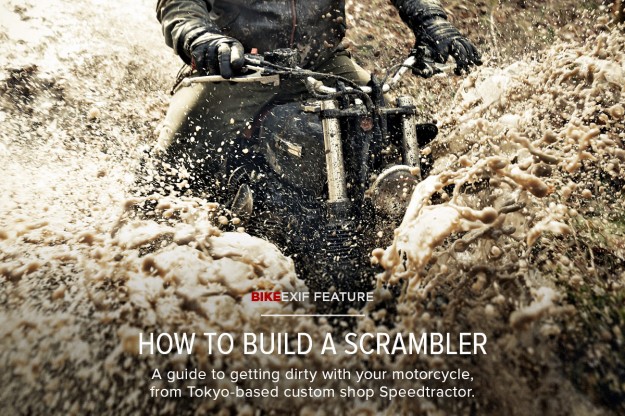
You’ve searched the web, watched the moody videos, and discovered that your street tires don’t like wet grass. You’ve decided you need a scrambler motorcycle—but how do you tweak your bike for good dirty fun, with a bit of extra style?
Here we’ll focus on the best-value mods, balancing cost with performance. Your goal is a scrambler motorcycle that’s robust, easily repaired and built using materials that can proudly wear the scars of your adventures. After all, if you build something too spectacular to get roughed up, you’ll end up missing half the fun.
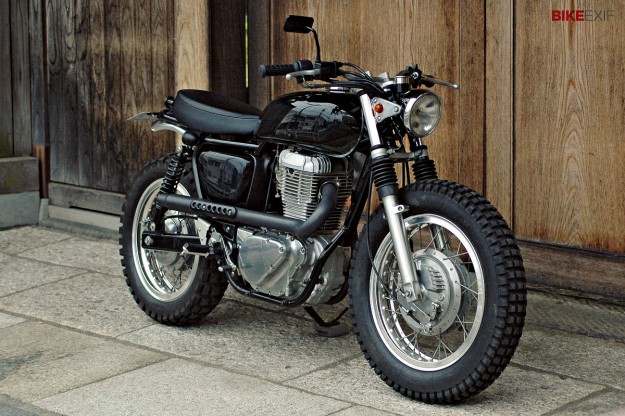
The Speedtractor T-61 Catalina Special offers all the mods you need to hit the dirt and work up a sweat.
Back in simpler times, scramblers started out as road bikes. Most were reverse-engineered by factories or owners to make them capable of heading off the beaten track—and hopefully back again.
For this discussion, let’s view the scrambler motorcycle as the result of an approach: A mechanical embodiment of an adventurous spirit. It doesn’t matter whether you’ve got a big Euro twin, a lightweight retro single, or a UJM that’s more of a boat anchor than a fire road blaster. Let’s tap into the ‘spirit of scrambler’ and get it done.
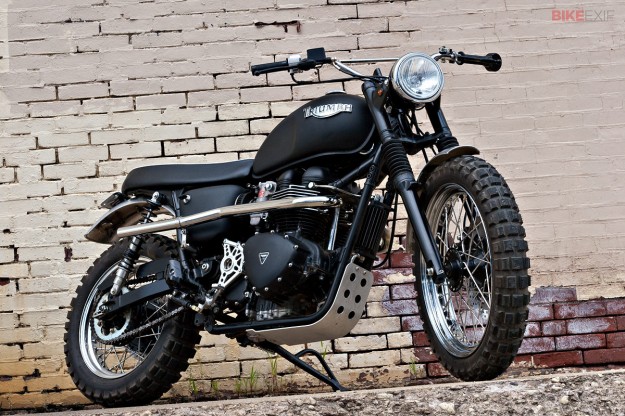
Choosing your bike. In 2011, the Hammarhead Jack Pine made people sit up and realize that a modified road bike can be good in the dirt. It put the Triumph alongside the Kawasaki W650/W800 as a contender in the large capacity scrambler class.
Smaller bikes that make good contenders are the Yamaha SR400 and 500—minus their mysterious pressed-steel rear additions. The 400cc Honda CBs and CLs make for nice starting points, and a few builders have shown that even Suzuki’s big single Savage can be made to work.
Go back a few years and Japan’s parallel twins make for a cheap and cheerful base bike. The BMW airhead boxers, though not cheap, make for a stunning finished product.
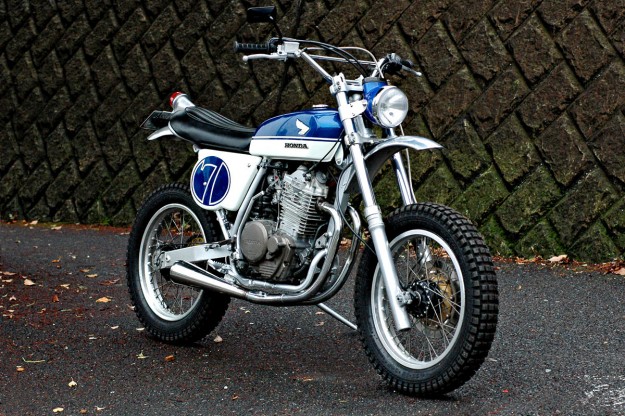
At the really lightweight end of the scale, check out Honda’s CB singles and twins in anything from 90cc upwards. (Go for the tube-framed models over the pressed steel.) There’s also the Honda GB250, Suzuki’s Grasstracker/Volty/TU250 and, if you have access to domestic Japanese models, the Kawasaki TR250. The TR250 offers a frame and engine of handsome, period proportions, and a plethora of aftermarket parts.
Generally, the key ingredients of scramblers come from twin shock, air cooled singles or twins. They prioritize torque over top end power, have visual simplicity, and fewer heavy cylinders projecting from the center axis. That said, we ride with a few brave souls who have converted Suzuki GS fours to dirt usage—so don’t let us tell you it can’t be done!
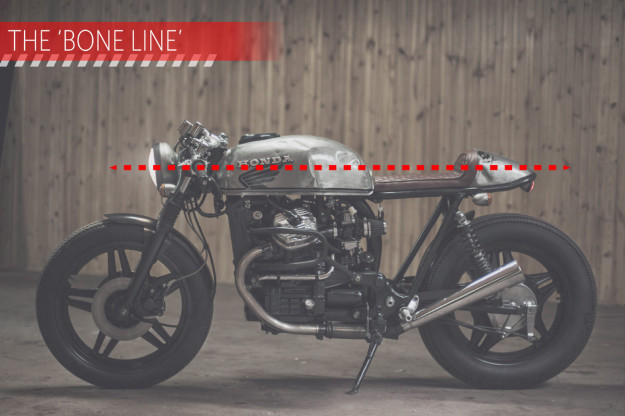
The Starting Line. As Charlie Trelogan mentioned in his guide to building a cafe racer, you need a few visual lines running through the bike, like the one above. Get those lines right and your finished ride will look cohesive and fast. Even when it’s standing still.
To fast-track the scrambler vibe, try switching out the tank for something smaller or more svelte than a humped cafe racer tank. The goal is to shed visual bulk and create purposeful proportions. Remember, there’s a good chance you’ll be up on it from time to time, so no luggage racks on the tank please.
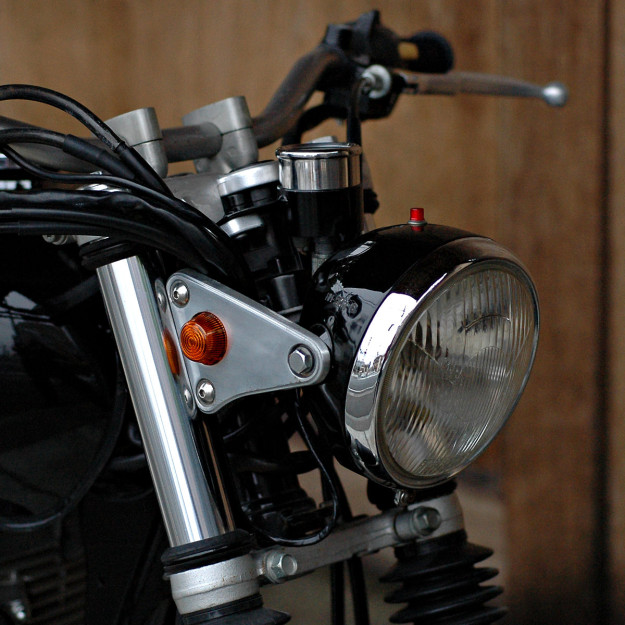
Bring the headlight back closer to the forks with shorter stays. Get mini gauges that can be tucked in tight, and shorten the seat a few inches. Together, these mods start to give the feel of a bike that’s had everything unnecessary stripped off, while still staying legal.
Don’t panic if the swoop of your seat or tank interrupts these sacred lines a little: just get the axis of each component working together. You want to avoid your eyes searching and the machine looking like its back is broken.
Experiment using the exhaust, bars and seat top to imply these desired lines, without having to create them with the tank or frame. Make your suspension mods before settling on these lines. An extra two inches of rear travel can upset even the best-laid plans.

Rims and Rubber. Fitting chunky rubber is going to change your on-road riding experience. There’s no way around it. On the upside, wet grass and loose surfaces are now your friends—and you can enjoy a little roosting too.
The wheels and tires you choose will go a long way to defining your machine’s style, as well as the way it handles. Spokes fit the bill on all but the rarest occasions, and we prefer alloy rims over steel. But beyond that, we’re philistines when it comes to worrying about gyroscopic effect or stiffness, sorry.
An 18-inch front with a higher profile tire will have a rolling diameter close to a 19-inch set up. Either one will help to smooth out the rough stuff, without losing the visual road bike origins of your scrambler. At the rear, 18-inch is our preference but a 17 works okay too.
A word of warning: check that your dream tire and rim combo will clear your forks, rear swing arm, chain and the like. Ignore this step and you would not be the first to learn they don’t spin once bolted up. Rear swing arm widening or extension is not a huge problem, but usually beyond the average garage builder with DIY tools.
A simple square tread pattern adds a retro vibe and off-road prowess. On lighter machines, trial tires make for fat, if fast wearing, fun. While Continental TKC 80s (above) deliver good results for larger beasts. If your heart is set on pair of the latter—and why not, they are damn sexy—then you’ll be looking for a 19-inch front rim and either an 18- or 17-inch rim at the back.
Spend time exploring the handling traits and limits of the new rubber on the road, especially if you’re used to modern road tires. Remember that sometimes you’ll need to use a slightly lower pressure than on road tires. And if you’re using a directional tread rear tire on the front (yes, we’re guilty too), remember to switch the rotation to allow for braking forces.
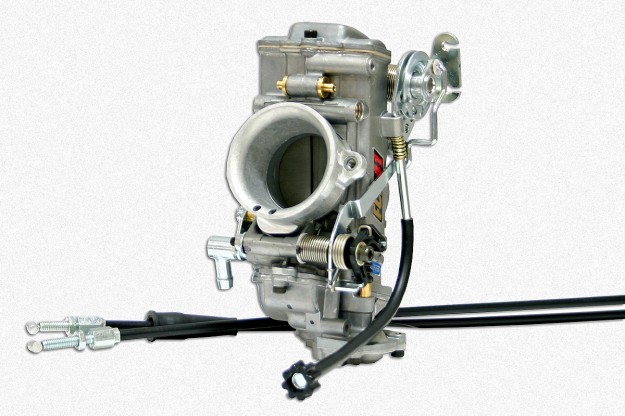
Engine Performance. Unlike a café racer, you’re not automatically entering a hunt for raw top-end power. Aftermarket carbs can give you extra responsiveness and a useful horsepower improvement, though. Keihin FCRs (above) are our pick, especially on singles, but we suggest staying conservative on the bore size—to keep intake velocity high for better bottom-end responsiveness.
Off road, the air box is your friend. It might not be as good looking as a set of alloy intake funnels or K&Ns hanging out in the breeze, but when you pass a friend desperately scraping mud from the folds of their exposed filter, you’ll thank yourself. You’ll just need to work a little harder on your design to keep the ‘box and still look cool. If you’re really worried, slip in a free-flowing filter element.
High pipes are the hallmark of the true scrambler, though not all had them. They are also a ticket to the Burns Unit for you (or your passenger) if they’re not properly routed and shielded. Position them to complement the tank/seat/frame line for added impact and a factory feel. Terminate them at the rear shocks as straight-throughs for a touch of that desert sled vibe (and hearing loss). Or run them longer with internal baffles or a CL-style muffler for a touch of class.